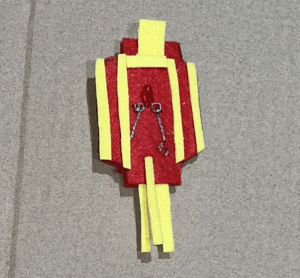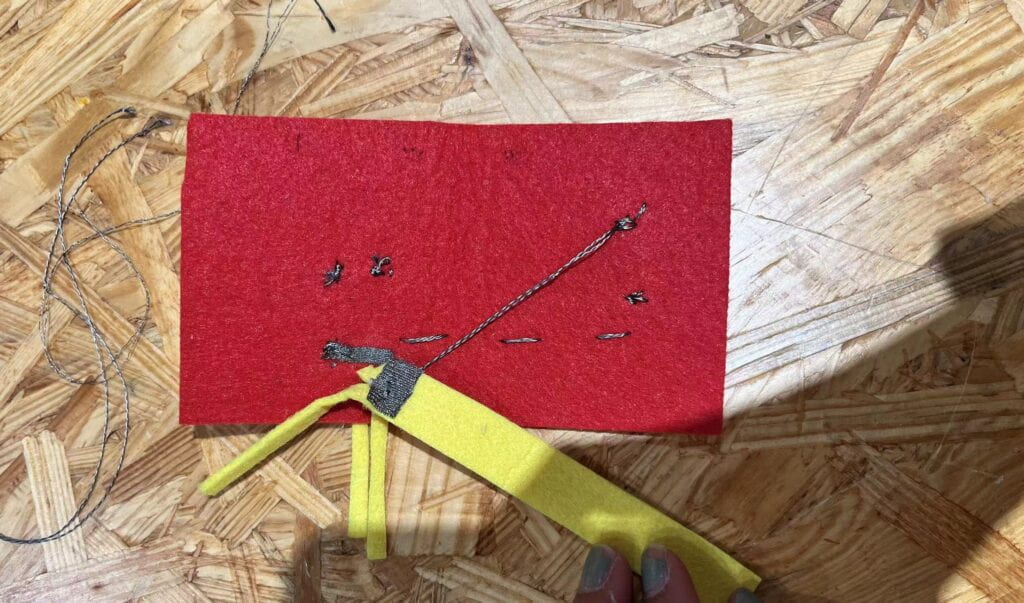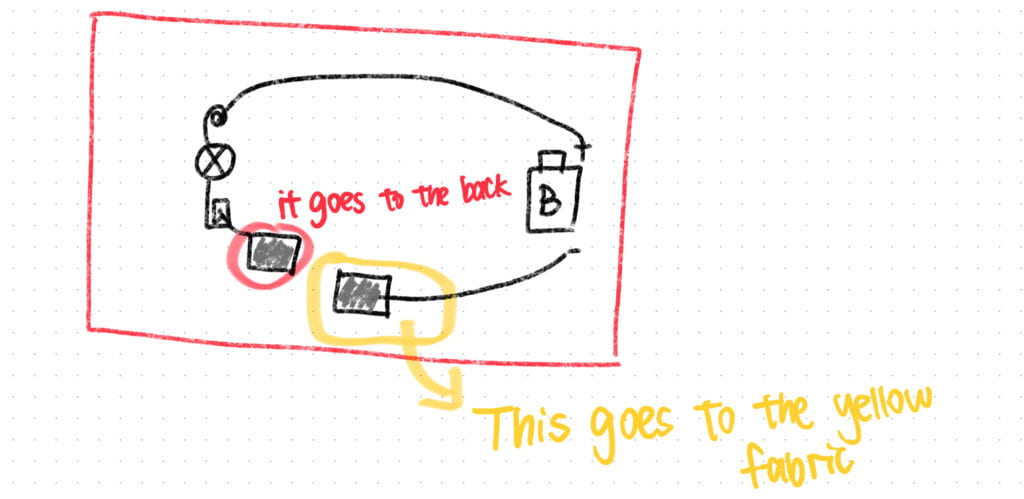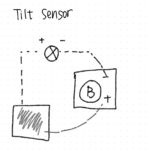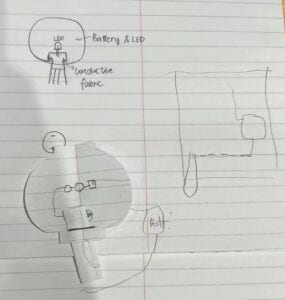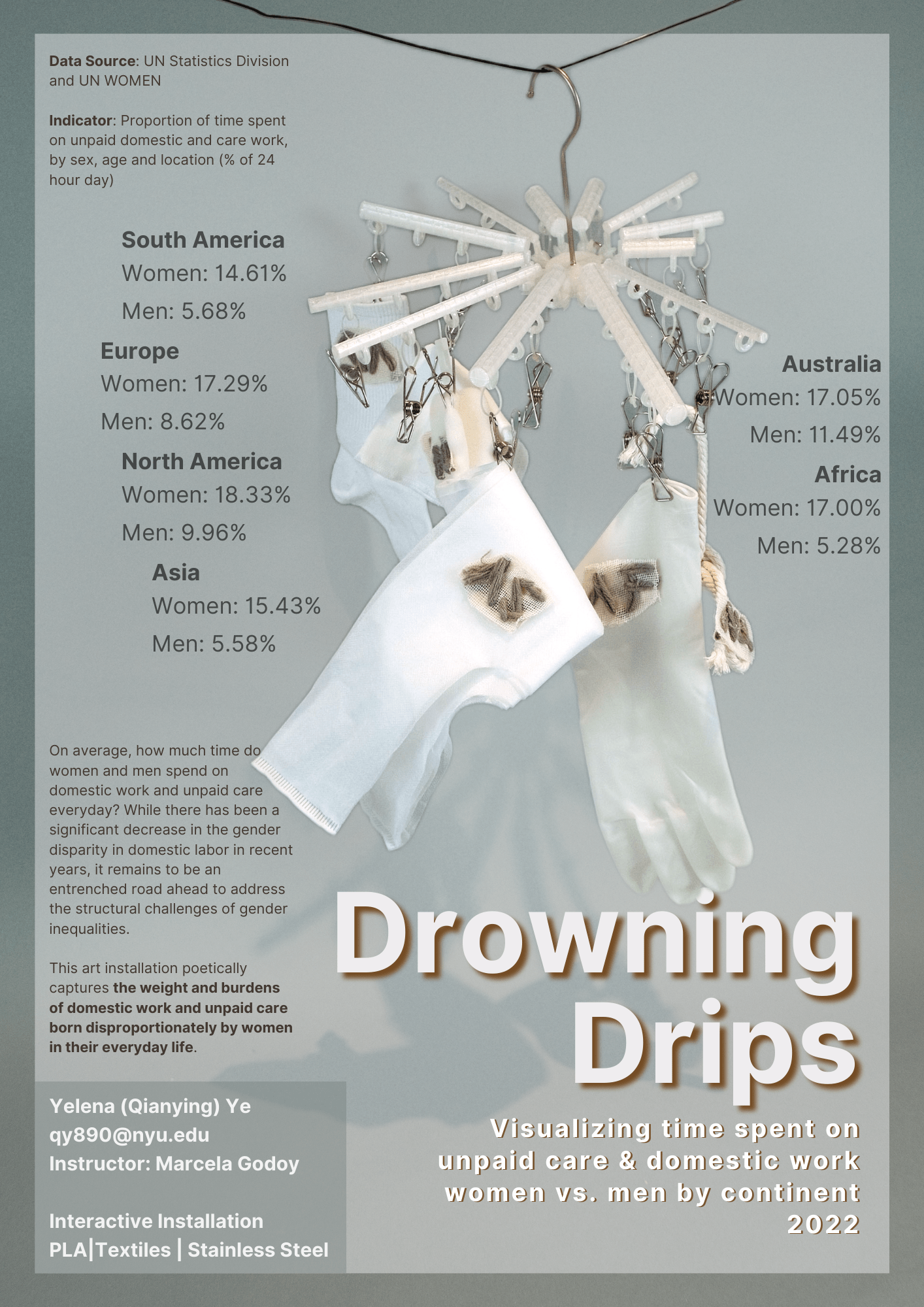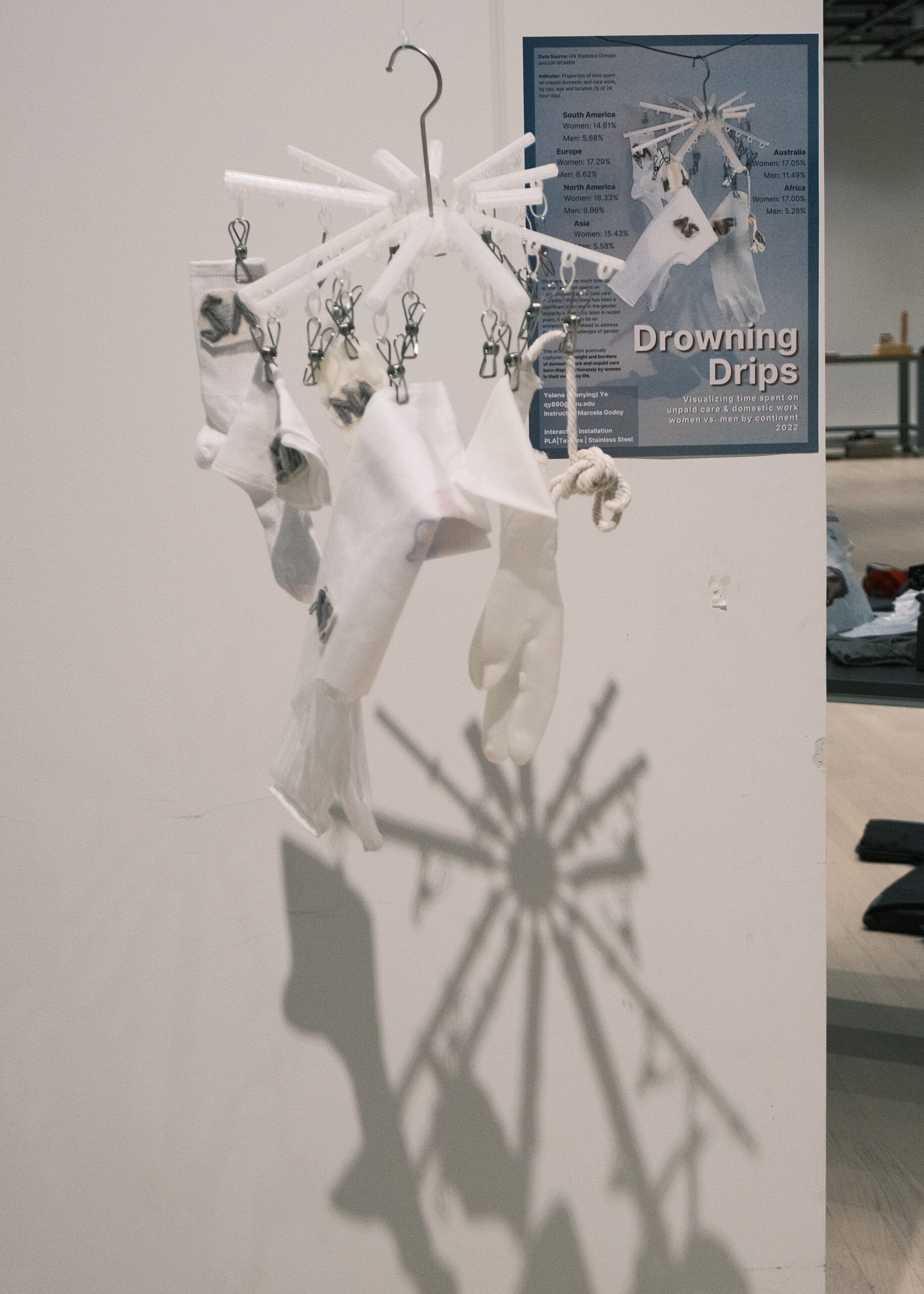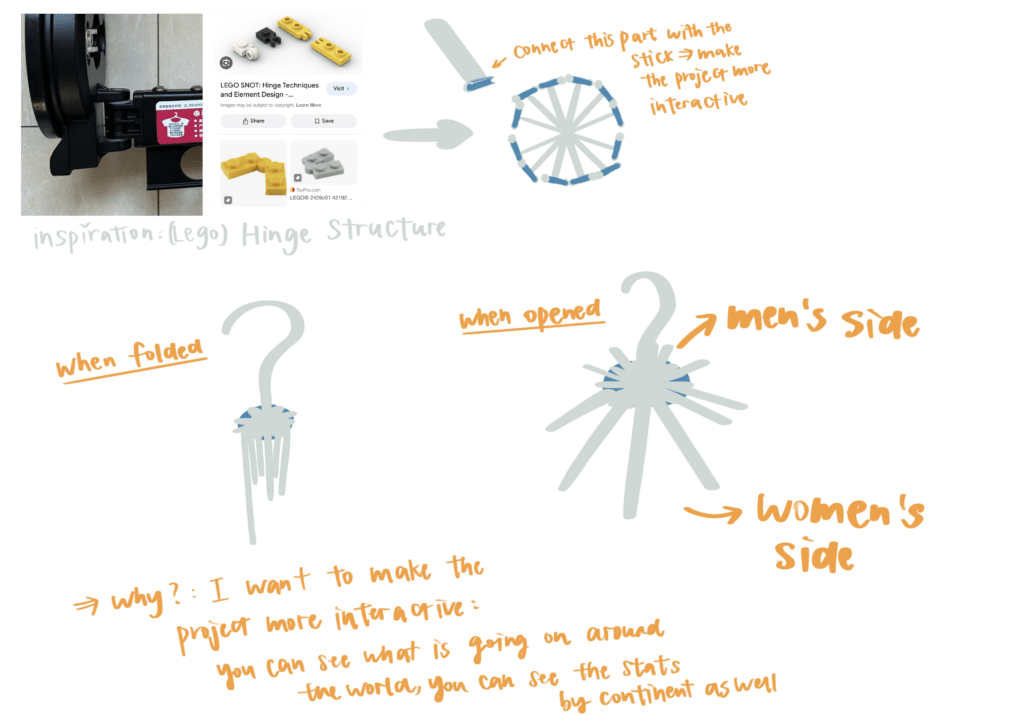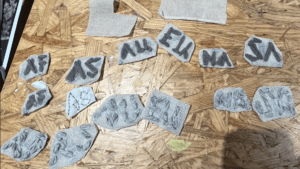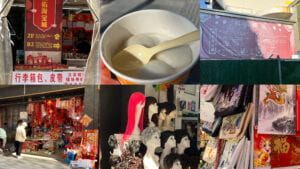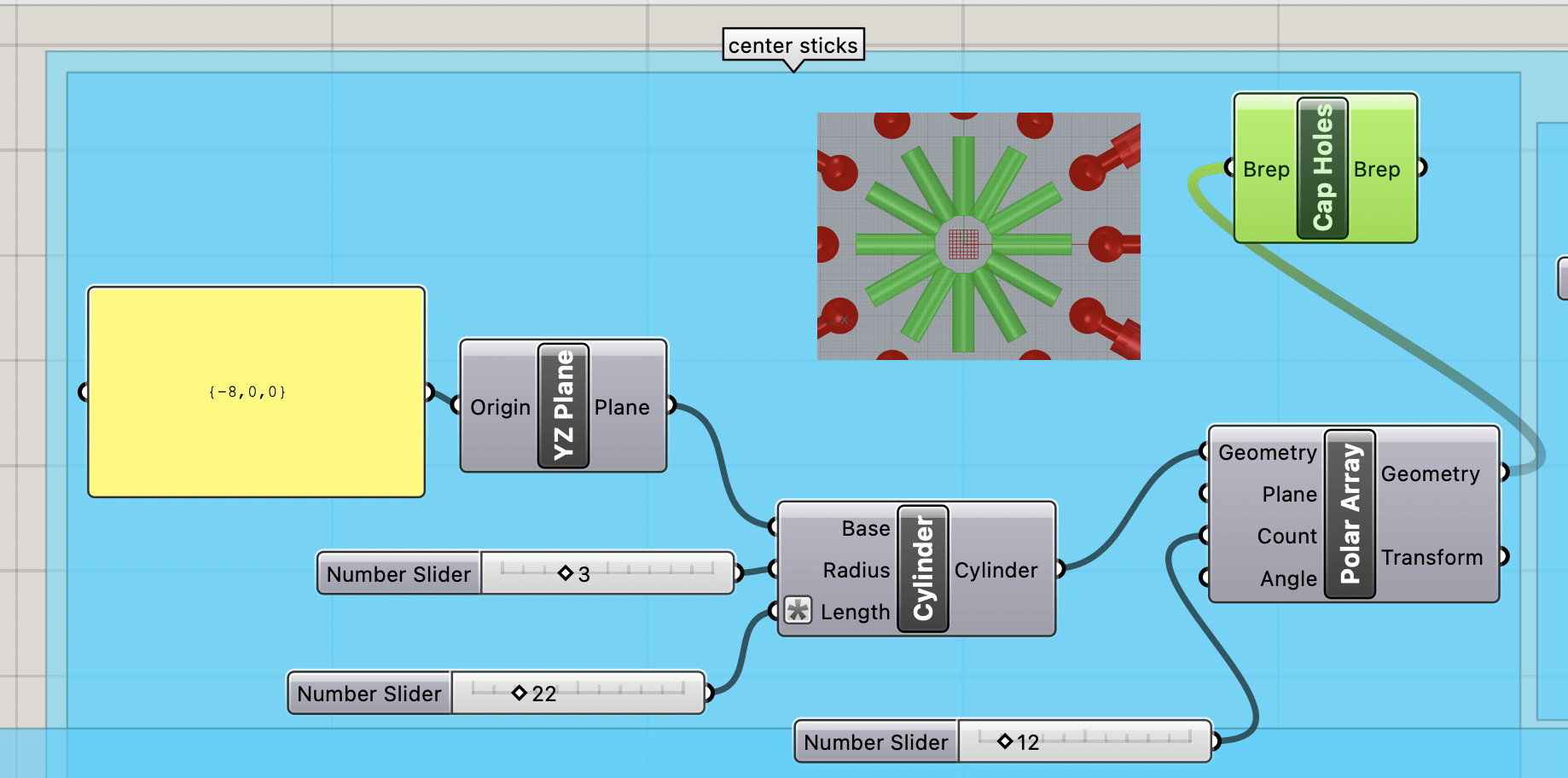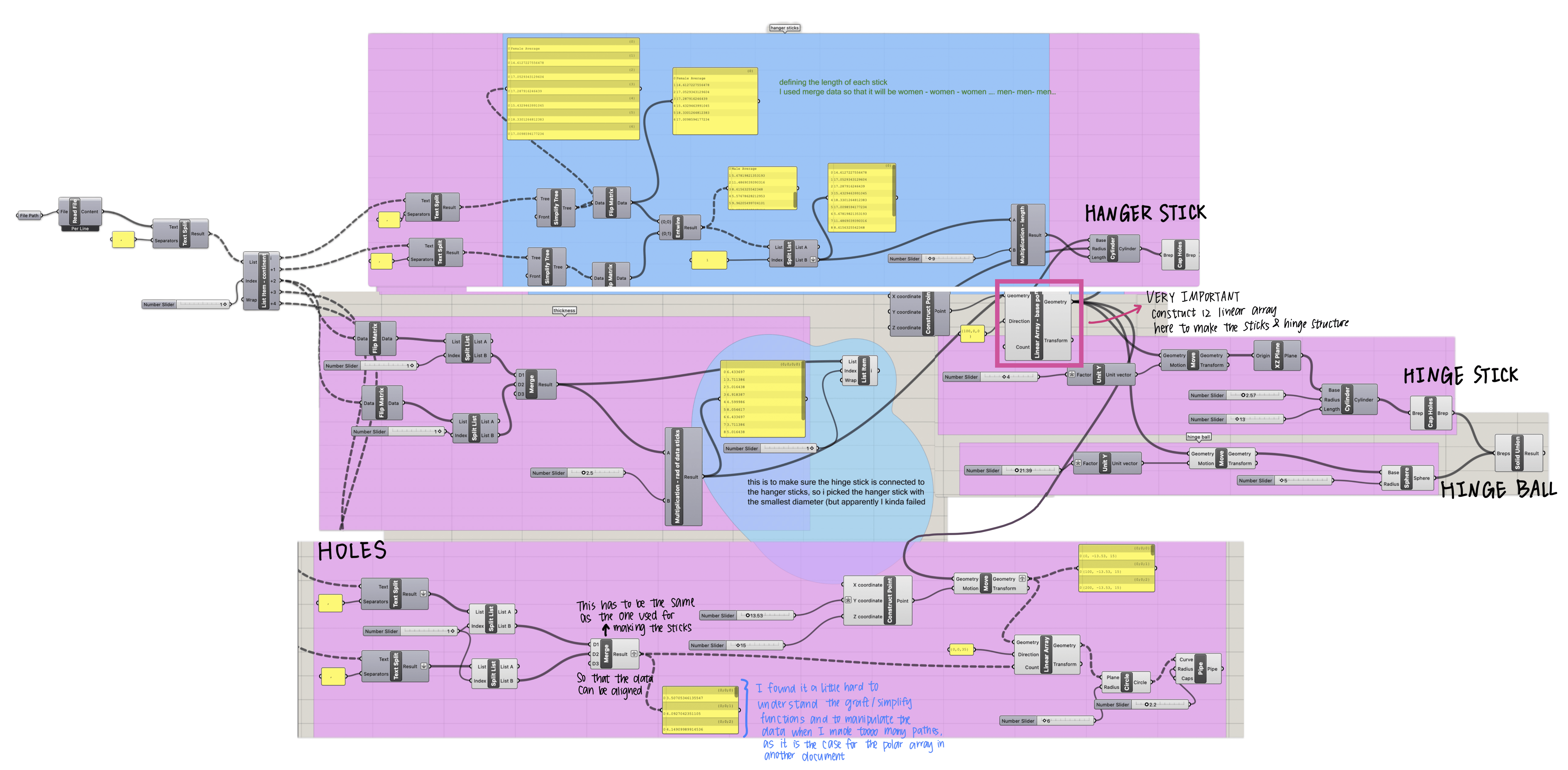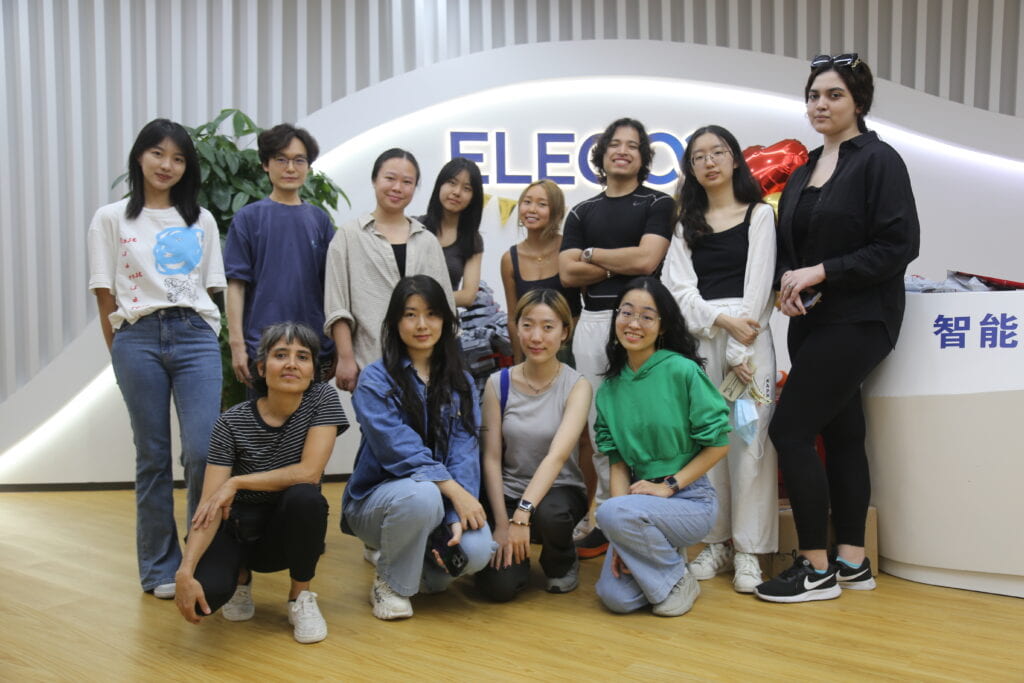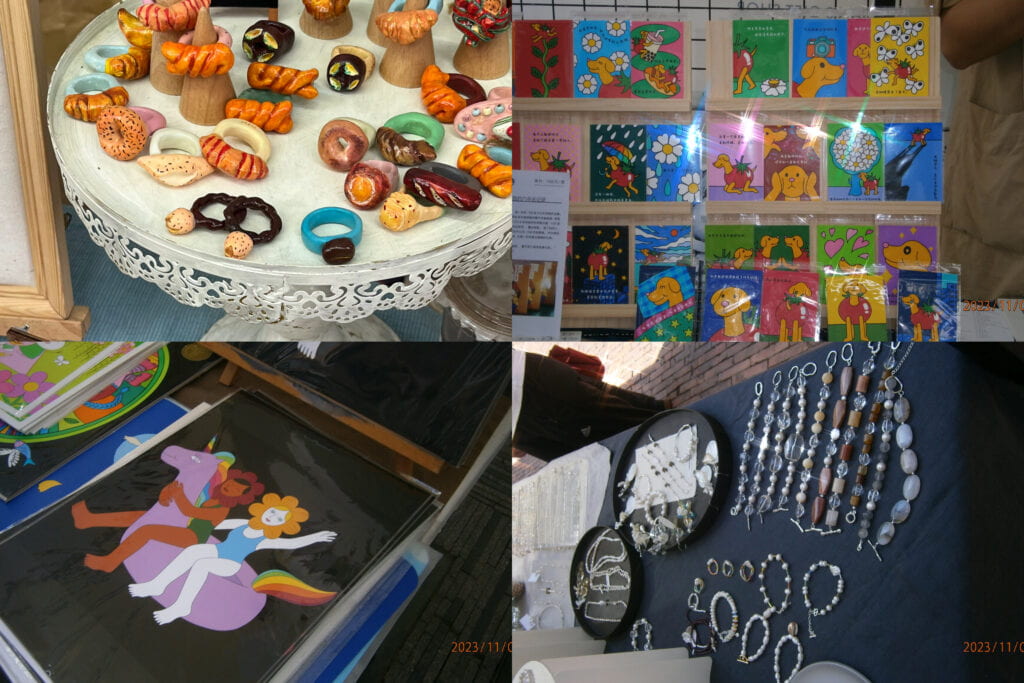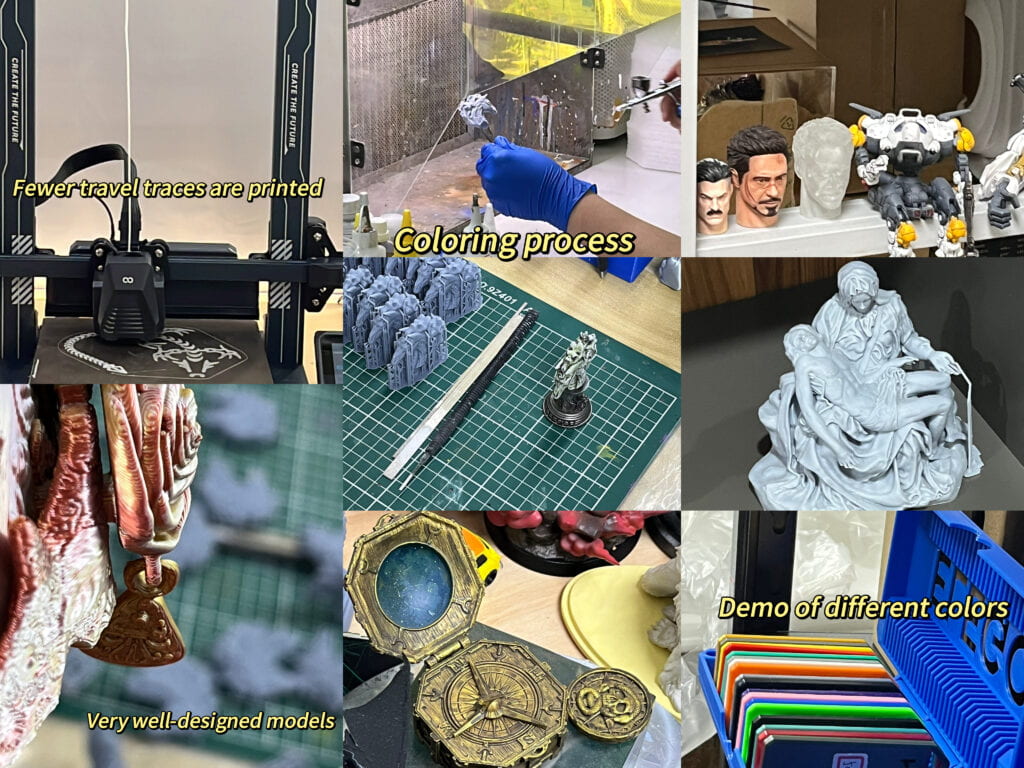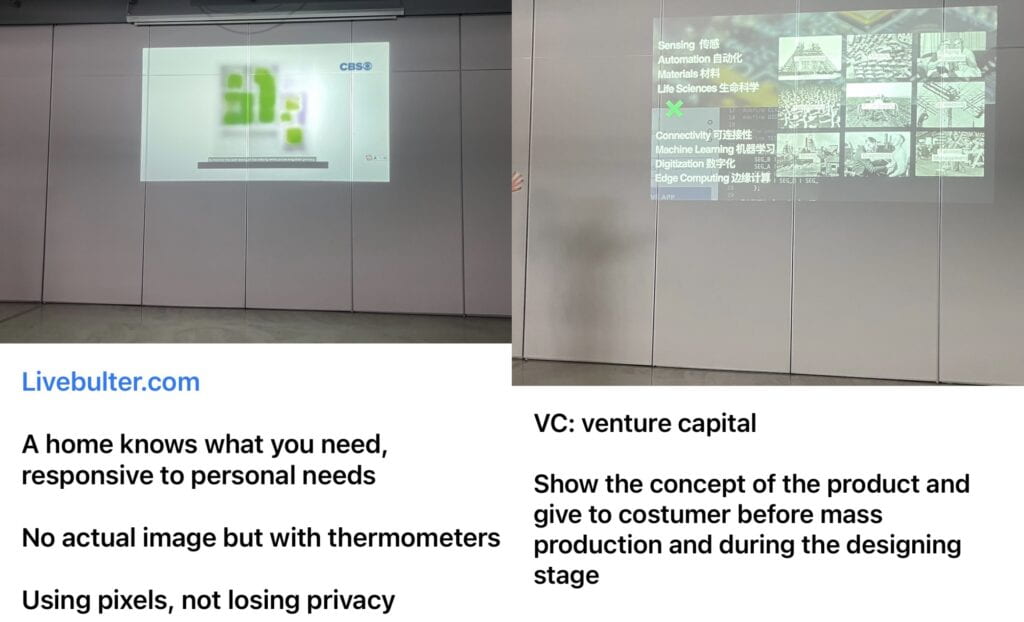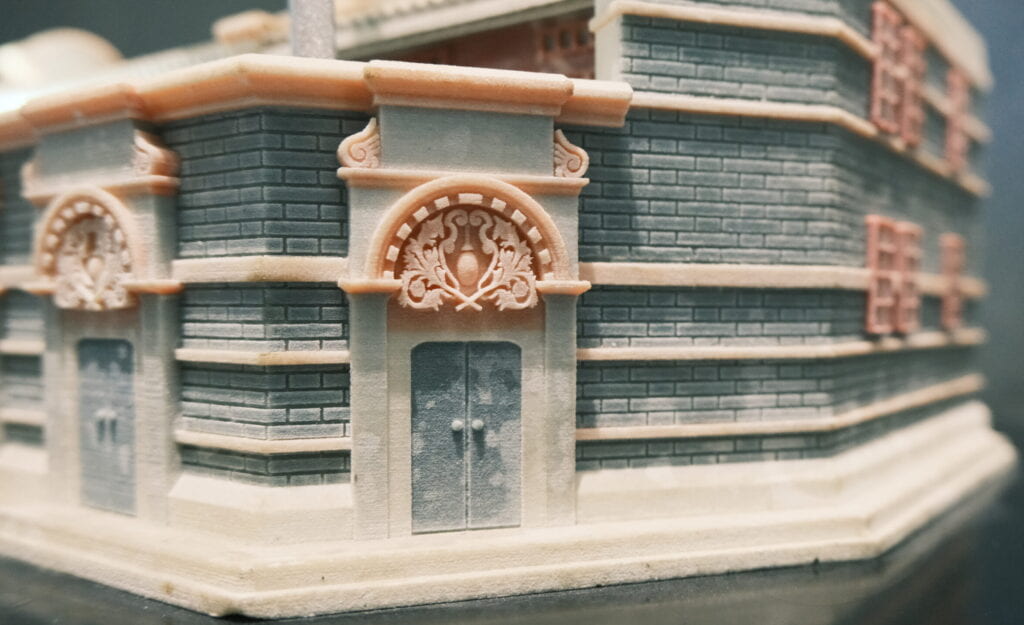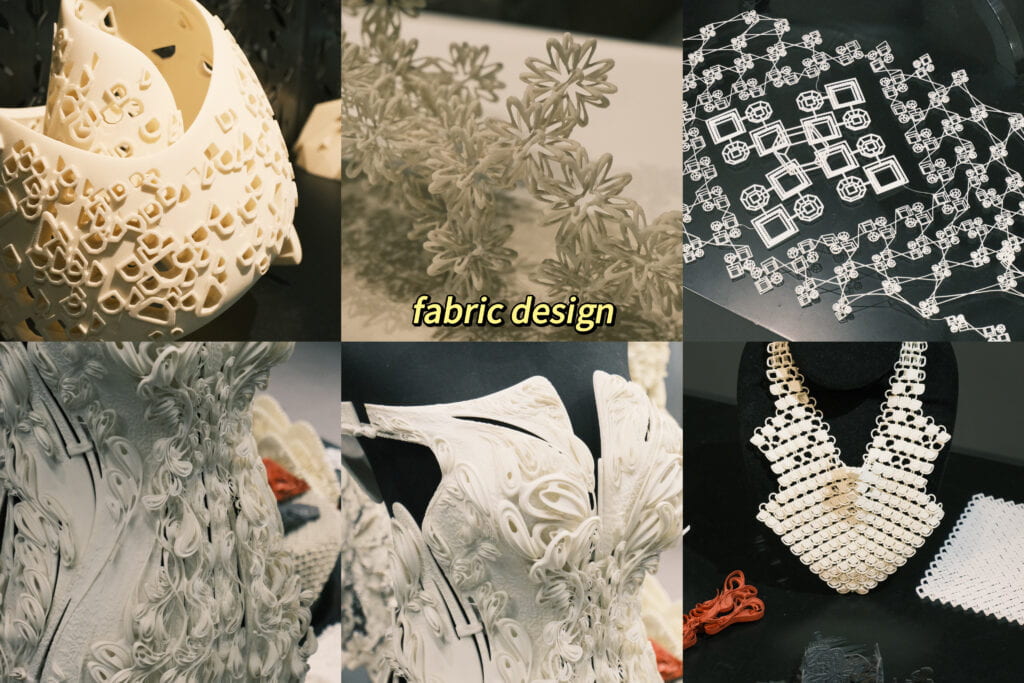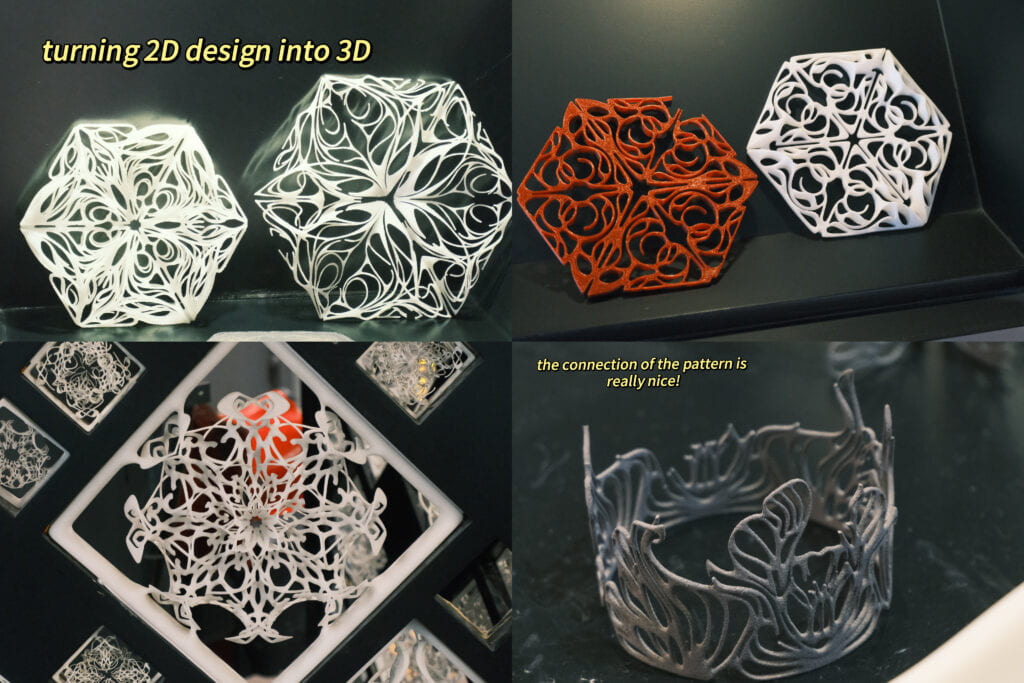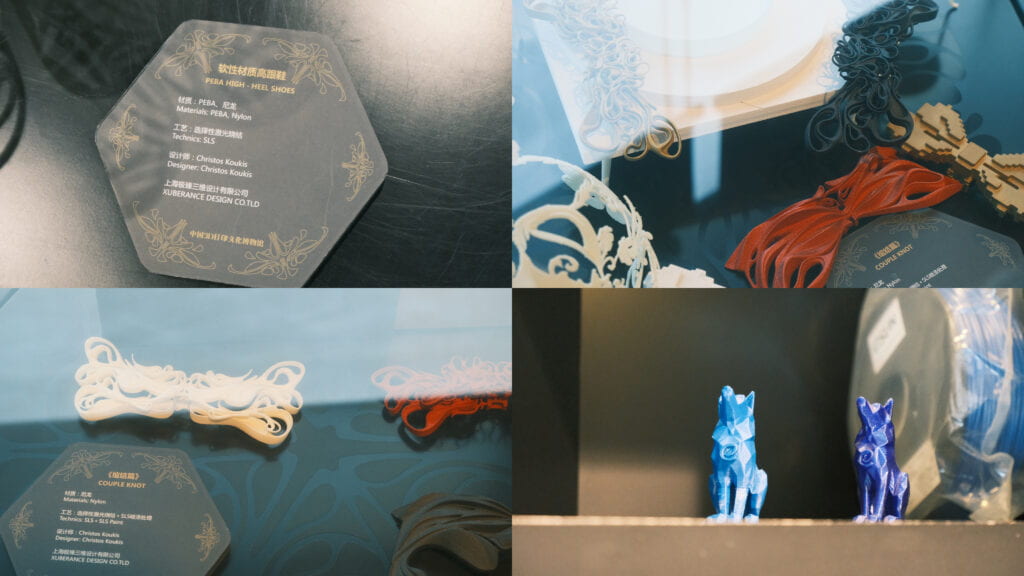🧑🏻🔬 In class exercise:
We tried the material called “Velostat” for our in class exercise. The material is pressure sensitive and can serve as flexible sensors. That is the reason why we need to leave enough space between velostat and another conductive fiber. It is a little bit frustrating that my computer didn’t work for the circuit, but luckily in the end we were able to test out our circuit on Korrina’s computer.
(We also tried with LED and buzzer, but unfortunately, I can’t find any video/ photo for them)
🦋 Iteration 1: Butterfly
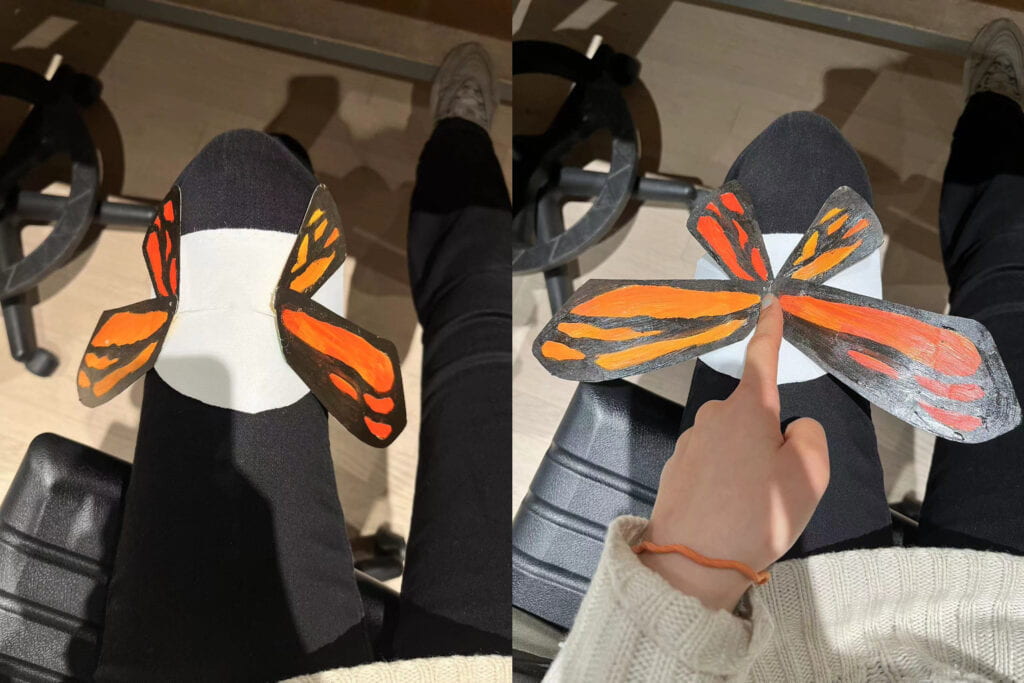
It is a shoulder/ knee decoration, but it is a half-finished piece. It was done by me because Korrina got sick after working for the Student Government Dumpling Festival (it was a really amazing event, ngl!!), so I decided to try out the mechanisms of our wings first. The idea is that when you feel someone invading your personal space (especially on the subway, when there are a LOT of people), you can open the wings and give others a warning sign. It changes how we sense the space surrounding us. I myself am very sensitive about physical boundaries. It wasn’t the original design, but since I used the box for subway Waimai, I realize that it can be used as a knee decoration as well. When the person sitting next to me is not in a good position, and I feel uncomfortable, I can open the wings to warn them. Another fun and unexpected discovery happened after showing this piece to Chanel. I intentionally picked these colors because I always find colorful butterflies terrifying (maybe because I watched too many documentaries and some said butterflies’ wings are poisonous). However, Chanel said this color and the butterfly shape is such a GENTLE reminder, instead of warning. I guess color, and semiotics/ shapes can change how we perceive the world as well (although this experience might be individualized).
🕹️ Technical take-aways:
Maybe the biggest take-aways in this piece is that when using the strings, do make careful measurements. The history reoccurred that I made the strings too long (again:)).
🪽 Iteration 2: Wings
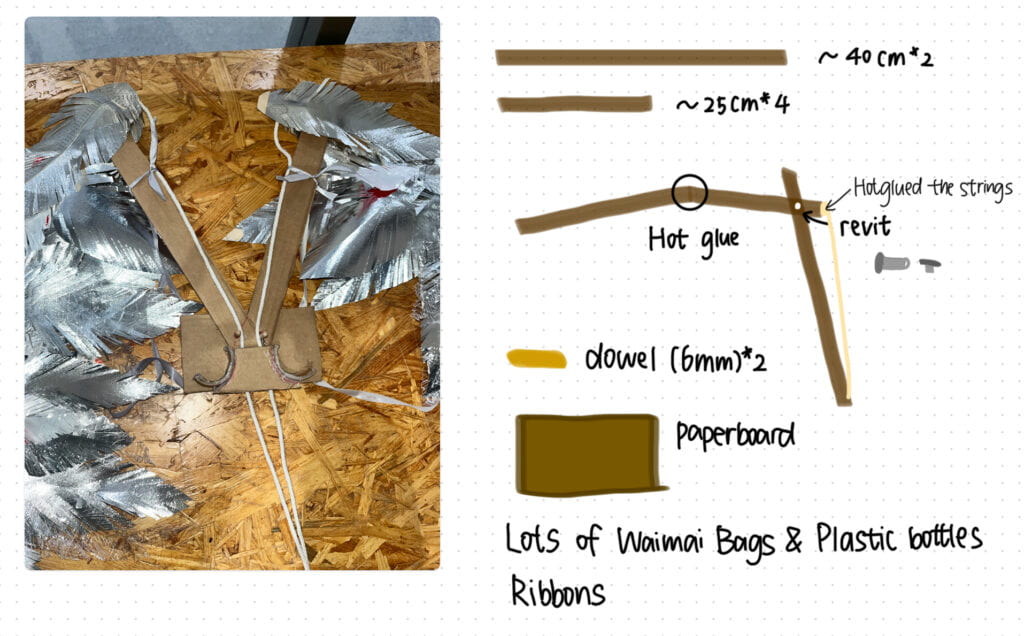
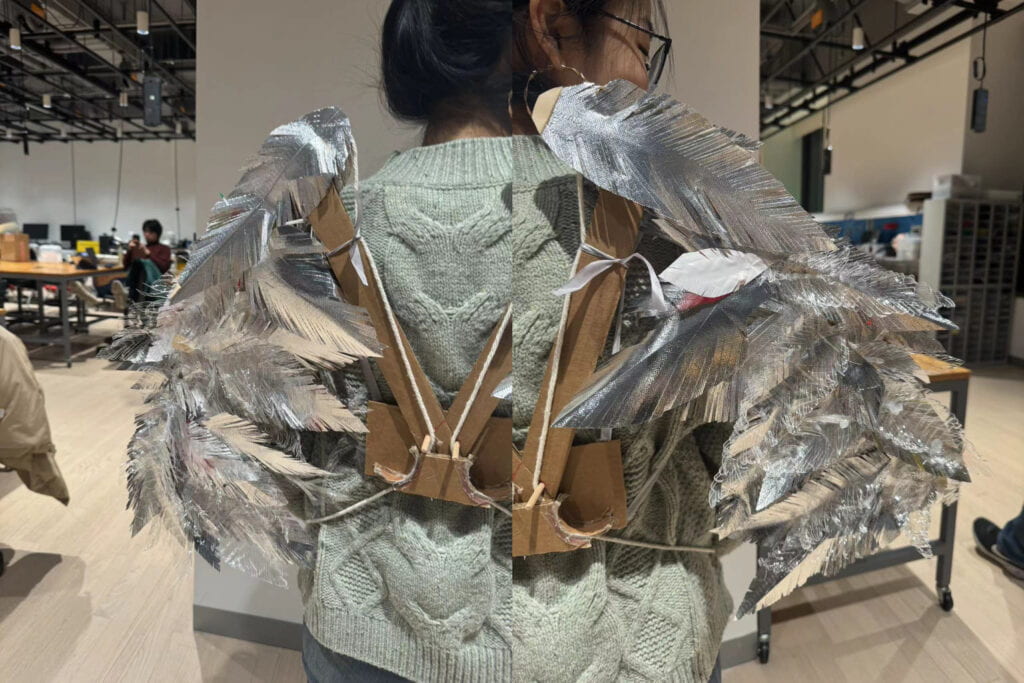
This is another piece about personal space. Korrina says when you feel small, you can open the wings by pulling the strings and remind others of your presence. The wings can make you feel bigger. It makes sense for me, but also, I can use them to warn others not to step into my personal space.
After finishing this piece, it is also amazing how, because of the self weight, the wings can go down themselves. The plastics and thermal materials work really well under the lights as well. The also produce sounds through scratching each other. These effects inspire me on how clothings and wearables can interact with our hearings and perception of the colors.
🕹️ Technical take-aways:
I definitely became more familiar with the materials and tools we have in the lab after this project. It was a fun experience. We used recycled materials, which I am super proud of. I “learned” how to heat up the plastics, and we realized that it’s hard to control how plastics curve under heat, maybe you can control the thick ones a little bit. Based on my observations, in most cases, the plastics curve up against the hot airflow, although I expected them to go in the other direction.
I think this whole experience with the materials and textures actually changes my relationship with the environment. Because I kept observing and experimenting, trying to understand the quality of each material. Although it was time consuming, but I had to admit, I learned a lot from this assignment. (and it was de-stressing :)))
🔖 Reading Reflection
Reading See Yourself Sensing- Redefining Human Perception reminds me of the research I did in my first semester here. It was about body misperception/ body dysmorphia among social media users, especially young girls. The misperception of one’s own body comes from the discrepancy of those ideal body images in online spaces, and one’s own body in real life. The internalization of those ideal visuals may lead to one’s dissatisfaction about their own body. In this case, the visual sense is largely controlled by the capitals: their narrations of the ideal body, ideal shape, ideal definition of beauty are perceived, consumed and internalized by users, and users lose control of their perception.
Another notion, sensory substitution, caught my attention. I read about an artist, whose family members fled to South Asia during the Chinese diaspora, and were “invited” back to live in China afterwards. The family members said those spices commonly used in making Thai food, lemongrass, galangal, lime (rind and leaves), coriander leaves, sweet Thai basil, reminded them of the great memories back there, although they were not a local in Thailand. The artist took this as her inspiration and created an art installation that combines sight and smell together. (( For me, just reading the description, I can already smell those nice spices, and think of their taste, and imagine life in Thailand.) It is interesting how our senses are connected, not only to each other, but also to our cognitive system.
